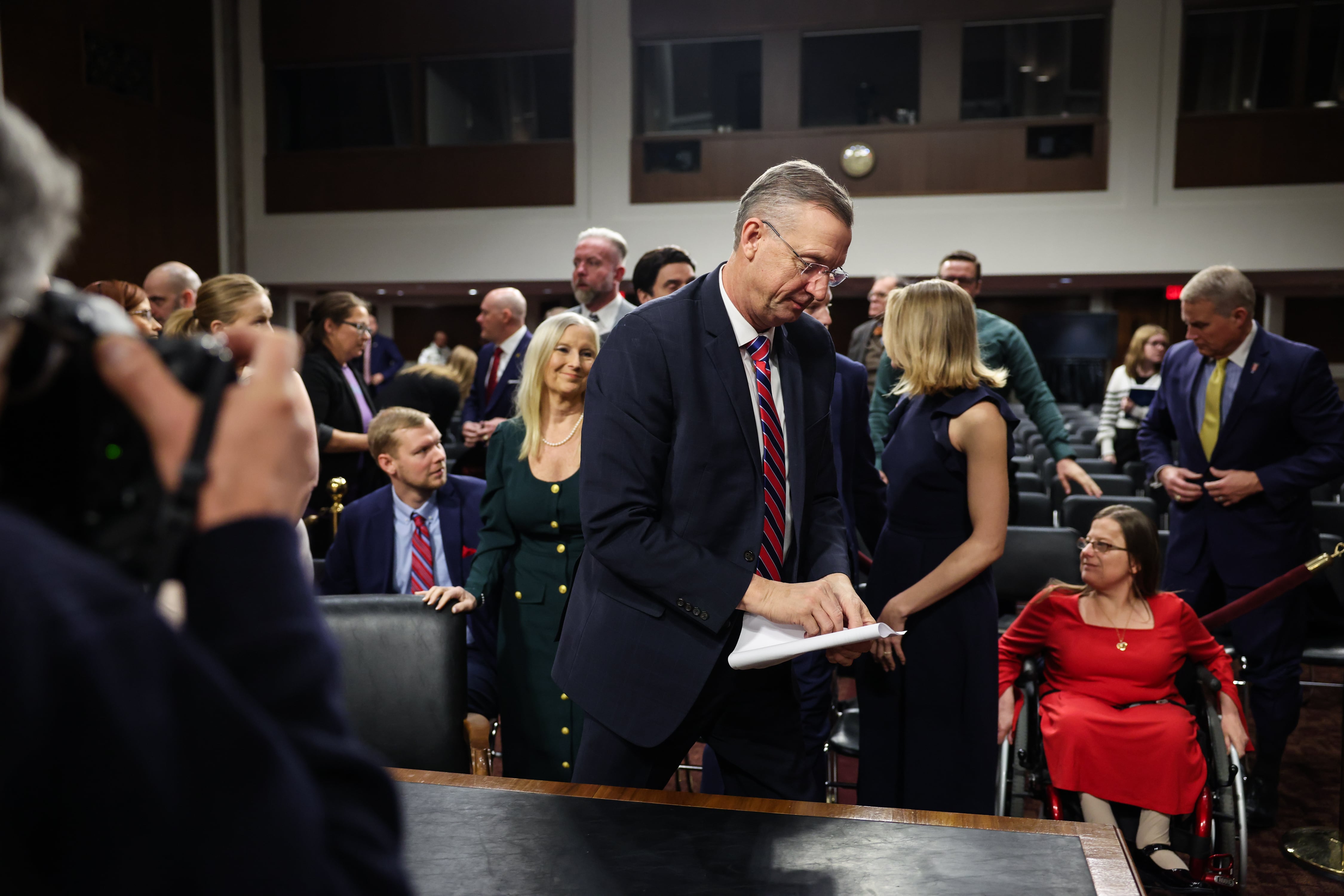WASHINGTON — Congress would press the pause button on the Air Force’s effort to retire B-1B Lancer bombers until the B-21 Raider replaces them under the fiscal 2022 National Defense Authorization Act.
As part of the compromise defense policy bill, which the House passed Tuesday and will next be taken up in the Senate, the Air Force would not be allowed to further reduce its fleet of B-1 bombers, except for units that have started fielding B-21s. This prohibition would last until the end of September 2023.
Northrop Grumman has already started building five B-21s, and they are expected to start being fielded in the mid-2020s, which would mean the B-1 fleet would stay at its current inventory of 45 in the near-term.
The NDAA would also prevent the Air Force from cutting personnel from units that operate or maintain B-1s, if those reductions would hurt the squadron’s capability.
The B-1 has been in particularly rough shape in recent decades as heavy operational deployments in the Middle East took their toll. The Air Force this year retired 17 of its oldest and most worn-out Lancers, to allow its maintainers to focus on keeping the remaining 45 bombers operating.
Most of those retiring B-1s, including the first in February and the last in September, flew to the Boneyard at Davis-Monthan Air Force Base in Arizona.
All of the remaining B-1s, as well as B-2 Spirit bombers, are expected to be retired in the next decade. This would leave the Air Force with B-21s and B-52 Stratofortresses, with upgraded engines, as its bomber fleet.
Congress would also allow the Air Force to continue its plan to divest the Air National Guard’s RC-26B intelligence, surveillance and reconnaissance aircraft by April 2023.
“We agree that continuing a year-to-year existence for the RC-26B units is an unsustainable policy, disruptive to personnel and readiness,” the House Rules Committee said in its joint explanatory statement.
But the NDAA dinged the service for not detailing to lawmakers how it would carry out the retirements and how units would be affected, and said it wants to hear more by March.
The House’s original version of the NDAA would have blocked the RC-26B’s retirement.
The compromise bill’s approach will be a relief for Lt. Gen. Michael Loh, head of the Air National Guard, who at the Air Force Association’s conference in September called the RC-26 an old aircraft and expressed frustration that Congress might prevent him from even getting ready to retire it.
“Each year, I’m spending millions of dollars to keep a fleet alive, that quite frankly has run its useful life, and I need to actually get out of those to get into something newer,” Loh said.
The NDAA would also require the Pentagon to give lawmakers more details on how it would update the engines in the F-35 Lightning II.
Under the bill, the Air Force would be required to send lawmakers a report early next year on how it will integrate the Adaptive Engine Transition Program propulsion system into the F-35A and begin to retrofit the engine into existing fighters starting no later than fiscal 2027.
The NDAA also would require a similar report from the Navy secretary on integrating an advanced propulsion system — whether the AETP engine or an upgraded version of the Pratt & Whitney F135 engine already in the F-35 — into the Navy and Marine Corps’ F-35B and F-35C. This report should analyze how a new engine — including its increased thrust, fuel efficiency, speed, acceleration, range and other factors — would affect those fighters’ combat effectiveness, sustainment costs and air refueling needs
The NDAA would also bar the Pentagon from entering into or switching to a performance-based logistics sustainment contract for the F-35 airframe or engine, unless the secretary of Defense certifies the contract would cut the F-35′s sustainment or operating costs, or increase its readiness, mission-capable, or airframe or engine availability rates, and includes a cost-benefit analysis comparing it to the existing contract.
And each March for the next four years, the NDAA would require the Government Accountability Office to review the F-35′s sustainment efforts and strategy.
The NDAA would also set deadlines for the Pentagon to transfer the F-35′s program responsibilities from the F-35 Joint Program Office to the Air Force and Navy, and require a transition plan by October. Sustainment activities would have to be transferred by October 2027, the NDAA said, and acquisition functions would shift to the services by October 2029.
Rachel S. Cohen contributed to this report.
Stephen Losey is the air warfare reporter for Defense News. He previously covered leadership and personnel issues at Air Force Times, and the Pentagon, special operations and air warfare at Military.com. He has traveled to the Middle East to cover U.S. Air Force operations.




